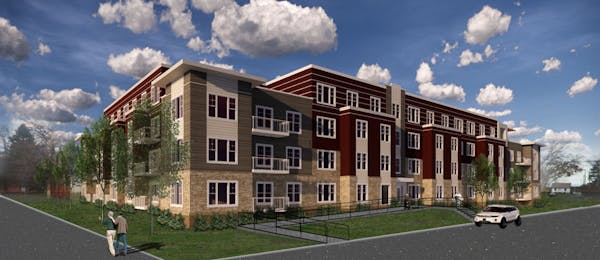Gov. Tim Walz has proposed giving Ramsey County $6 million of the state's remaining federal COVID-19 aid to fund expanded homeless shelter capacity, which was created during the pandemic.
County leaders have warned of an imminent "funding cliff" that will reduce shelter beds and could force hundreds of homeless individuals and families back to unsafe outdoor encampments in St. Paul and its surrounding suburbs. They say increased homeless shelter beds will be needed until more affordable housing already in the pipeline can be built.
"Ramsey County and the city of St. Paul came to us to in February and asked for help to solve a significant funding cliff. They were pretty nervous about it," Lt. Gov. Peggy Flanagan said in an interview. "They sounded the alarm. They worked together. They put together a plan. If we can keep 200 people at least stable, we should do that."
The proposal needs approval by the bipartisan Legislative COVID-19 Response Commission (LCRC), which could vote as early as next week. So far, that committee has not rejected any of the governor's requests, Flanagan said.
"While the LCRC has approved every appropriation that we have brought before them, it is not a done deal until they sign off on it," Flanagan said. "I think this is a completely reasonable ask. … This feels like the least we can do with those ARPA [American Rescue Plan Act] dollars."
Ramsey County originally asked for $14.5 million a year for five years to increase shelter capacity as more affordable housing is being built, and it gained bipartisan legislative support.
Walz included $6 million for Ramsey County in his supplemental budget proposal, but it languished on the list of unfinished business when the Legislature adjourned.
Minnesota's pandemic-era eviction moratorium has been phased out, and evictions have spiked in recent months as renter protections and financial assistance have run out. Landlords filed for nearly 1,800 evictions in May — about 500 more than in May 2019, before the pandemic.
Ramsey County leaders have been hand-wringing about the possible closure of shelters at their board meetings each week.
"We are extremely disappointed that the Legislature didn't come to an agreement and fund our Heading Home Ramsey ask. This standoff left us with one place to go for help — Governor Walz," County Board Chair Trista MatasCastillo said in a statement. "The governor's commitment to all Minnesotans gives Ramsey County the opportunity to take a critical step to address the homeless crisis. I am beyond grateful."
Ramsey County has spent more than $35 million in its own emergency federal COVID-19 aid to support expanded shelter needs throughout the pandemic, according to figures released in March.
Even before COVID-19 struck, the Twin Cities region was grappling with surging homelessness that was spilling out of shelters and into encampments in parks and along freeways. The east metro relied largely on nonprofits Catholic Charities and Union Gospel Mission to provide shelter beds. The county added its "Safe Space" shelter as a year-round option in 2019.
After the number of homeless people living outdoors in St. Paul rose to nearly 400 in summer 2020, Ramsey County signed leases to create temporary shelters at the former Bethesda Hospital, Luther Seminary, Provincial House and Mary Hall. St. Paul established temporary shelters at community centers. The Bethesda facility has since closed, and Luther Seminary and Mary Hall are closing. County leaders said they want to use the $6 million to work with partners and other providers to fund efforts.
In addition, the county and St. Paul have committed more than $74 million of their combined federal COVID aid to create permanent affordable housing. The county has also begun collecting $11.5 million in property taxes annually under a Housing and Redevelopment Authority (HRA) levy, which could be used, in part, to build and preserve affordable housing.
The number of homeless individuals living in outdoor encampments in St. Paul, which dropped to a couple dozen in 2021, had increased to 107 by mid-June, Deputy Mayor Jaime Tincher said.
Tincher said St. Paul, partnering with Ramsey County and nonprofits, is committed to finding safe temporary and long-term housing for homeless individuals. City leaders believe it's not safe to live in a tent in Minnesota — summer or winter — and will continue to push for better, safer options, she said.
"Our strategy is about bridging the gaps to care that exist among people experiencing unsheltered homelessness in our community," Tincher said. "Thanks to the governor and lieutenant governor, we have a major investment that will bolster our effort to break down barriers to stability together — one person, one story at a time."

Want to share info with the Star Tribune? How to do it securely

'Safe recovery sites' would offer syringes, naloxone and more to people using drugs. The plan could be in peril.
New Minnesota GOP leaders seek peace with party's anti-establishment wing

Who is Republican Lisa Demuth, Minnesota's first House speaker of color?

